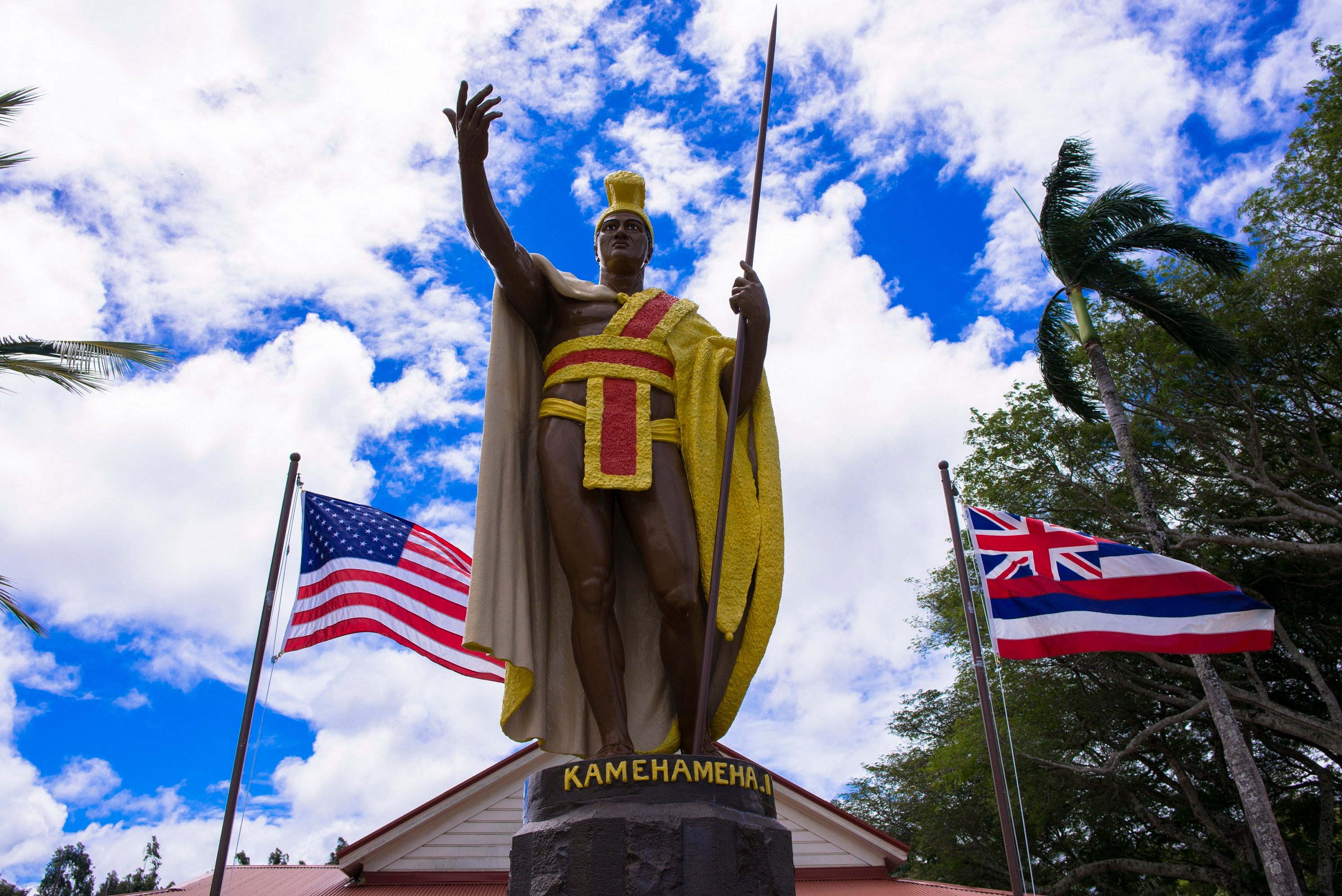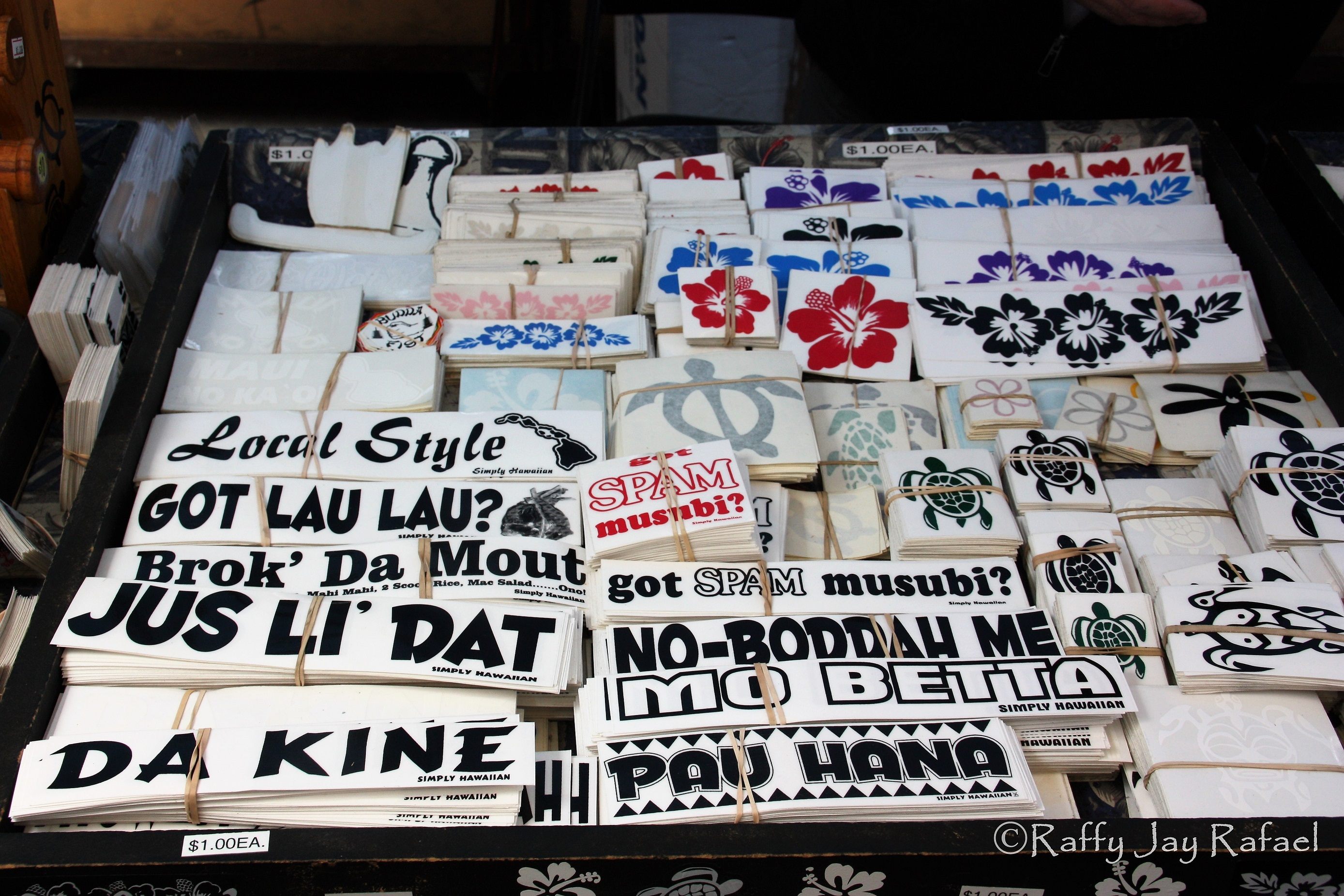‘Da Kine,’ Hawaii’s Fantastically Flexible All-Purpose Noun
It means everything and nothing at the same time.

After I wrote about “jawn,” the all-purpose noun that’s embedded in the culture of Philadelphia, I started getting emails telling me about a similar, and maybe even wilder, term native to a small group of isolated islands nearly 5,000 miles away. Hawaii’s “da kine” is not only an all-purpose noun, capable of standing in for objects, events, and people: it’s also a verb, an adjective, an adverb, and a symbol of Hawaiian people and the unique way they speak. It may be the most versatile phrase on the planet.
To understand da kine, you first have to understand exactly what language modern Hawaiians speak, which is not nearly as simple as you might think. There are several languages co-existing on the Hawaiian islands: Hawaiian, the Polynesian language of the original Hawaiians that’s experienced a renaissance of late; English, brought to the archipelago by American imperialism; the various languages brought by immigrant workers, including Japanese, Filipino, Portuguese, and Spanish; and something which is now called Hawaiian Pidgin. It’s the last of these that brings us da kine.
A pidgin, which is not capitalized, is a form of communication that arises when multiple groups of people need to talk with each other, but do not have a language in common, and for whatever reason choose not to, or are not able to, teach each other their native languages. They are not considered full languages, in that they generally have limited and simplified grammar and vocabulary. Basically, pidgins are tools: you have to speak to somebody, but you can’t use either your own language or the other person’s language, so you come up with this basic system to get your point across.
The majority of pidgins tend to mine the vocabulary of the ruling class’s language for words. In Hawaii, as well as in the Caribbean and other places, that language was English. In Hawaii, immigrants from Japan, the Philippines, Korea, and China all came to work the plantations, but their only option for communication was to create an English pidgin. “This is partially done purposely,” says Kent Sakoda, who teaches a class on pidgin at the University of Hawaii at Manoa. “They don’t want people to be able to organize. So you separate them, and one of the ways you do that is by language.”

The various Asian immigrant groups were separated in lodging, but still worked together in the fields, so had to come up with a way to talk. The solution was a pidgin, using English words the workers heard from their bosses. English is the “lexifier” in this case, meaning English lends the words to the pidgin. So this form of pidgin would be “English-lexified.”
But here’s the thing: Hawaiian Pidgin—note the capitalization—is not a pidgin, not anymore. It’s a creole.
Pidgins often have a limited lifespan. Maybe the isolated groups figure out a way to teach each other their native languages, or they just learn the lexifier language. A pidgin is, by definition, not a primary form of communication; pidgins are tools, but they’re sort of blunt tools, not capable of the kind of complexity that all humans need to communicate. But sometimes something weird happens: the pidgin begins to grow. The children of the immigrants who created the pidgin add to it. In a generation or two, the pidgin isn’t a tool alongside a native language: it is the native language. And at that point it’s called a creole.
“A creole has to do everything for its speakers that any language would do for any speaker. So it has to be more precise and more complex,” says Sakoda. “When it becomes a native language, it’s a full-blown language, a language of great complexity, like any other language in the world.” By the 1920s, Hawaiian pidgin wasn’t a pidgin, it was a creole, but the name, despite its inaccuracy, has stuck. Today it’s capitalized, which goes a little way to indicate that Hawaiian Pidgin is more than a standard pidgin. What it is is a full language.
Hawaiian Pidgin today is made up of largely English-derived words, with some words from the various languages of the Hawaiian immigrants and the native Hawaiians, in a structure that’s sort of like English, sort of like other creoles, and contains some syntax from various Asian languages. It is not really mutually intelligible with English; sometimes an English speaker might understand enough words to kind of get the gist of a Hawaiian Pidgin sentence, but that’s true of, say, a native Spanish speaker listening to Italian, too. What makes a creole so confounding is that many of the words may have originated from another language, but have taken on totally new or different meanings. Even if, as an English speaker, you think you recognize and understand a Hawaiian Pidgin word, you might not really be getting it.

Da kine is one of these. It originally comes from the English “the kind,” possibly relating to the meaning of that English word as “kind of,” or “type of.” But there are not that many instances where you can replace da kine with “the kind” and have any idea what a Hawaiian Pidgin speaker is saying.
The most popular use of da kine is a similar one to jawn, in that it’s a stand-in for another word, kind of like “whatchamacallit.” But there’s an added social meaning to that use of da kine. “When people use da kine, the expectation is that the other person will be able to recover what is meant,” says Sakoda. “The implication is that you know each other well enough that the person using da kine will not have to explain it. There’s even an understanding that the other person will not ask what is meant by da kine.” There’s an intimacy to the use of da kine that you don’t really get from “whatchamacallit.”
That intimacy also comes with a darker side. Sakoda gave me an example of saying, “She’s so da kine,” which could mean, in the right context, something negative: she’s mean, she talks too much, that kind of thing. When da kine is used as an adjective like that, Sakoda says he thinks the meaning can often veer negative, but there’s a reason for that. “If it’s negative, you don’t want to say it,” he says. “You’re talking about somebody else—we say here, you’re talking stink about somebody else—and you don’t want to be responsible for saying that. So da kine is sort of like, it’s your interpretation, and if I get called on it, well, I didn’t say it!”
There are plenty of circumstances in which using da kine as a stand-in isn’t necessarily because you’ve forgotten what you want to say. Instead, it’s because, well, you don’t want to say what you have to say. Here’s another: “Don’t get sloppy with me, before I da kine you.” What does that mean? Well, nothing good, but maybe you don’t want to go on the record making a specific threat. So pull out the trusty da kine.

This isn’t to say that da kine is always negative, nor that, really, it has to have “da” in front of it. You could describe someone as “a smart kine people,” or tell your kid to “make sure you da kine before we go” (referring to doing a chore), or explain where someone went by saying “he wen da kine dem” (referring to going with somebody’s family, or friends, or whatever makes the most sense in context). Sometimes you can get clues: the word “stay,” in Hawaiian Pidgin, indicates an ongoing action. If you say “I stay eat lunch,” that means, basically, “I am eating lunch,” with no need for the -ing ending that English uses. If you talk about a woman, and you say she’s “stay da kine,” that often means, says Sakoda, that the woman is pregnant.
Where things get tricky with Hawaiian Pidgin is figuring out what even is Pidgin and what’s more like a dialect of English. With the continued presence of native English speakers—hard to avoid given that Hawaii is an American state—the line between Pidgin and English can sometimes be blurred, or not fully understood. Sakoda says that he often has to point out to his students when they’re using an English-derived word in its American English sense versus its Pidgin meaning.
Take the word “never.” In English, if you were to say “I never go to Las Vegas,” that would be interpreted as meaning “at no point in the past or future do I go to Las Vegas.” There’s a permanence to the English meaning of “never.” In Hawaiian, not so much. “In Pidgin, it’s just a past negative, meaning ‘didn’t,’” says Sakoda. “So it could mean ‘this year I didn’t go to Vegas.’” In Pidgin, that use of the word “never—spelled “nevah”—would often be followed by a time period to clarify that. “I nevah go Las Vegas this year,” say. Someone with a keen ear might pick out the differences in meaning between the English “never” and the Pidgin “nevah,” but even the speaker may not realize he or she is speaking one rather than the other. Pidgin’s coexistence with English makes it tricky to tell if someone is bilingual; the overlap between Hawaiian Pidgin and Hawaiian English is fluid and ever-changing. It’s not as simple as switching from Spanish to English.
There is a perception of all pidgins that they are broken or incorrect versions of a language. That’s not usually too much of a problem, since a pidgin is a supplementary tool. But in Hawaii, where Hawaiian Pidgin is not actually a pidgin but a native language, the perception that this language is a bad form of English is a dangerous one. “There’s a stigma attached to the Pidgin that’s spoken here,” says Sakoda. “So there’s kind of a social or educational force to lose the Pidgin and to speak so-called ‘better English.’”
Sakoda thinks Hawaiian Pidgin, thanks to those forces and the continual presence of English, is making Pidgin more English-like. But it won’t necessarily stay that way. There are plenty of creoles and even English dialects that begin at some point to further extricate themselves from the lexifier language. (This has happened, to some extent and in some communities, with AAVE, better known as Black English Vernacular.) Maybe speakers of Hawaiian Pidgin don’t want to be associated with mainland American English, want to use their language as an identity marker of themselves as Hawaiian. If that was to happen, the trend could reverse: Pidgin could begin to lose some of its similarities to English. Whether or not that happens, though, da kine isn’t going anywhere.










Follow us on Twitter to get the latest on the world's hidden wonders.
Like us on Facebook to get the latest on the world's hidden wonders.
Follow us on Twitter Like us on Facebook